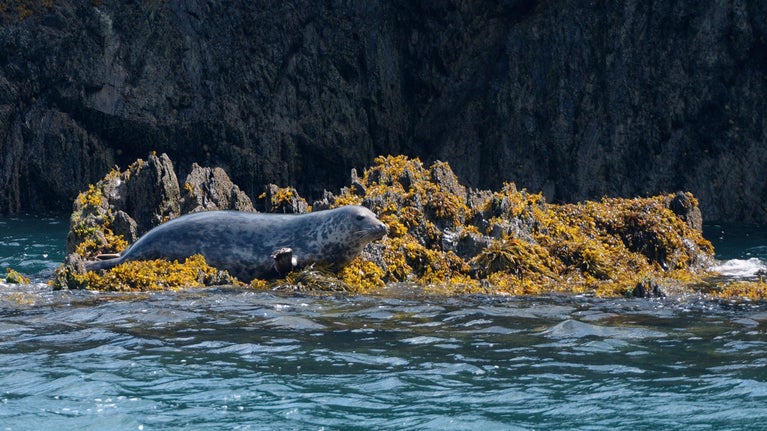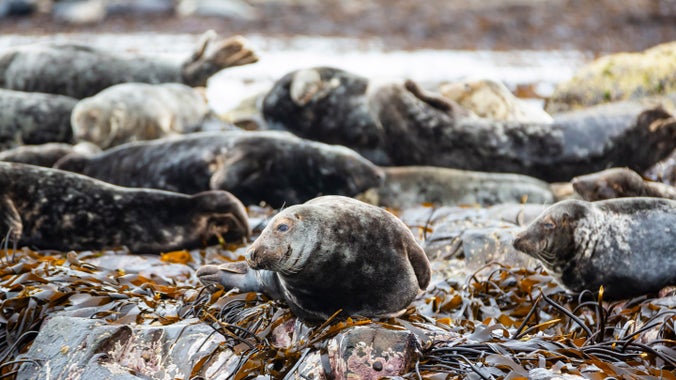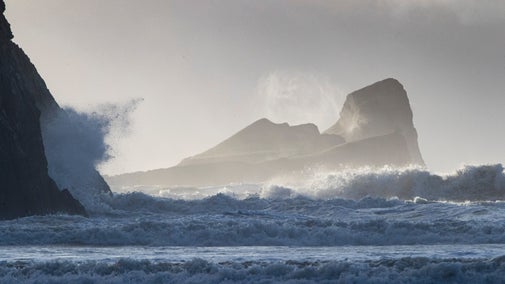
Discover more at Marloes Sands and Mere
Find out how to get to Marloes Sands and Mere, where to park, the things to see and do and more.

Around the coast of West Wales, you can spot grey seals throughout the year. They spend a lot of time at sea but come ashore to breed from August to November, when parents and their pups can be spotted on beaches around Pembrokeshire and Ceredigion. Seals are protected by law, and we are lucky to share our coast with them. It’s important to do all we can to keep seals and their pups safe in their natural habitat. Please follow these guidelines to avoid disturbing them.
If you spot a seal or a pup, please take care not to disturb them by following these guidelines:
Disturbance interrupts rest, causes stress and wastes energy which can result in injury and puts the lives of seals and their pups at risk.
Watch out for these body language cues:
These guidelines were created in close association with the Pembrokeshire Coast National Park and follow The Pembrokeshire Marine Code of Conduct for Seals.

About half of the world’s population of grey seals breed on our UK coastline and a few thousand of those are present all year around in West Wales.
Some of the best places to catch a glimpse of grey seals along the cliff tops include Martins Haven, St Davids Peninsula, Abereiddi to Abermawr, Strumble head along the coast path to Cardigan and further up towards Mwnt and New Quay.
Scientific name: Halichoerus grypus means ‘hook-nosed sea pig’

Find out how to get to Marloes Sands and Mere, where to park, the things to see and do and more.
Find the best places across England, Wales and Northern Ireland to spot seals in the wild. Whether you're on a coastal walk or boat trip, there are plenty of places to see both grey and common seals as they come ashore to give birth.

Have a nature adventure in Wales and discover all kinds of wildlife, from the famous otters of Bosherston Lakes in Pembrokeshire, to the red squirrels of Plas Newydd in North Wales.

Learn more about what to see and do on a visit to Pembrokeshire in West Wales, from a beach day out at Broad Haven South to hiking around the Solva Coast, or taking a boat trip to Skomer Island.

Explore 157 miles of Welsh coastline protected by the National Trust, from long golden beaches to rugged clifftops.
